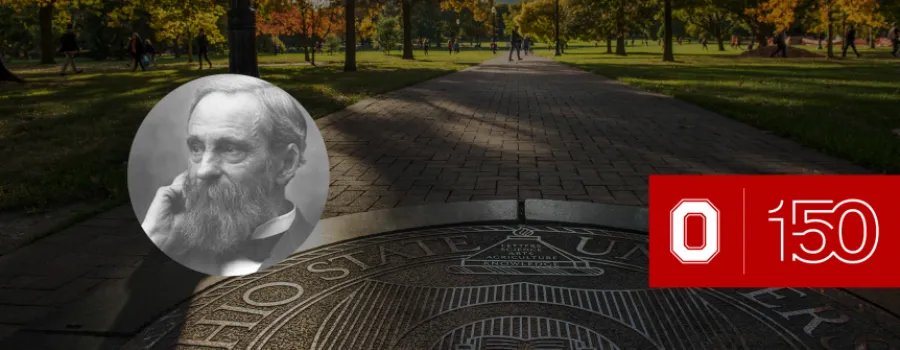
Stillman Robinson (1838-1910) led a varied and interesting life. He began his career as an apprentice machinist in order to earn money for college, then made the 625 mile journey from his home in Vermont to the University of Michigan on foot. Among his early inventions were the first thermometer graduating machine, and a double eyepiece for telescopes that enabled two observers to use the instrument at the same time. However, the most important and lucrative of his approximately 40 patents were for boot and shoe closing machines that united the upper and lower soles. He is also known for helping to establish the western boundary of Nebraska in 1869.
Robinson joined Ohio State in 1878 as a professor of mechanical engineering and physics. He became the first chair of the Department of Mechanical Engineering when the two disciplines were separated in 1881. He was in frequent demand as an expert engineer in fields as diverse as piping natural gas, car brake systems and bridge design. He also served as Ohio inspector of railways and bridges, which led to several important works on mitigation of “railroad shakes.”
Shortly after his retirement, he received an honorary doctorate of science degree from Ohio State. The Robinson Laboratory for Mechanical and Electrical Engineering, completed in 1908 (and demolished in 2004), was named for him. In 1902 he donated $5,000 to the university (later adding $1,850 so the award could be fully funded) to endow the university’s first graduate fellowship in engineering. A fellow is still selected each year by the graduate school.